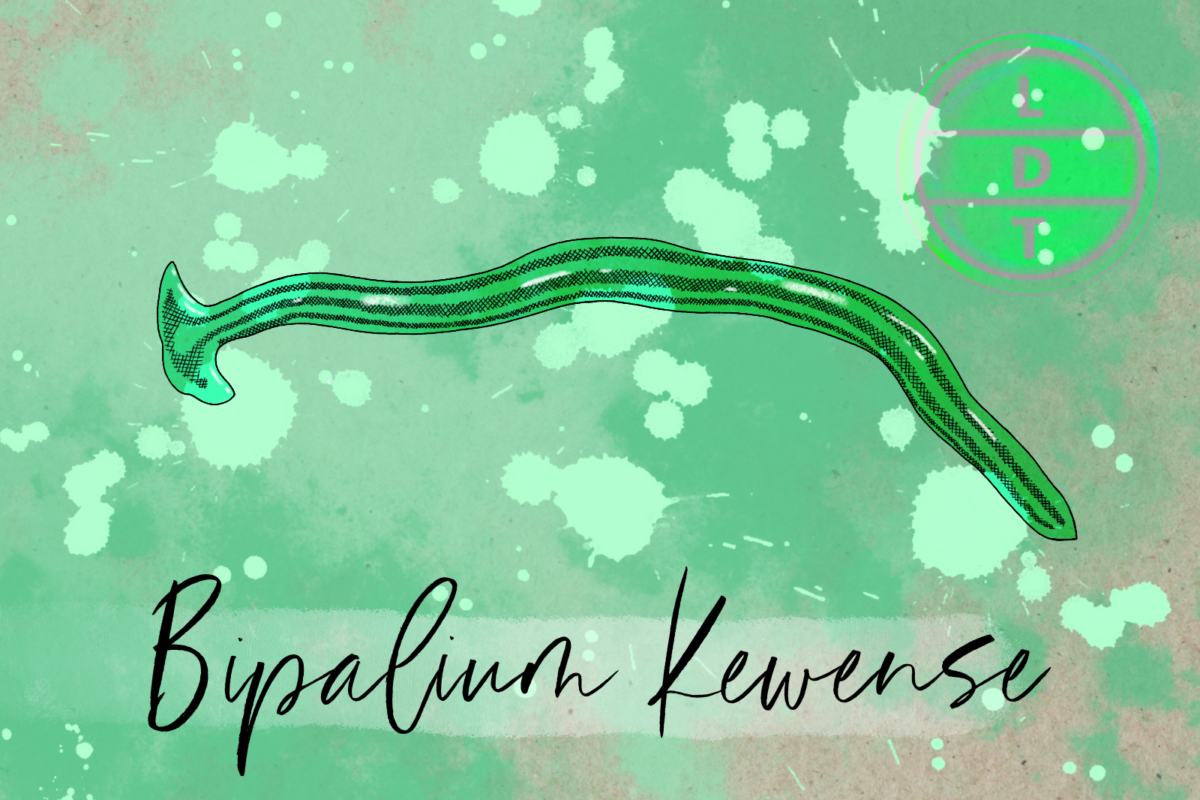“…and today we’re talking about a flat slimy menace that will not go gently into the night. But more on that later.”
Have you ever felt that you just don’t fit in. Struggling to make connections with a social group can be difficult, but what if you’re clashing with an entire ecosystem. Such is the plight of an invasive species. The hammerhead flatworm comes from lands far off, but it may be making a home in your backyard, eating something that you might take for granted. But sometimes the most resilient creatures overstay their welcome in Life, Death, and Taxonomy.
Description
- This guy looks like a wet slime with a portobello mushroom attached to its head
- It’s the most delicious shade of greenish-yellow with black stripes going down the length
- But its most defining feature is the flat, half-circle-shaped head.
- It doesn’t really look like a hammer
- Looks more like a wide shovel
Measure Up
Welcome to the beloved Measure Up segment. The official listener’s favorite part of the show! The part of the show when we present the animal’s size and dimension in relatable terms through a quiz that’s fun for the whole family. It’s also the part of the show that’s introduced by you when you send in audio of yourself saying, singing, or chittering the words Measure Up into ldtaxonomy at gmail dot com. We don’t have a measure up intro, so we’ll look back in the archives for our greatest hits.
Length
- 20 cm
- How many hammerhead flatworms go into the height of the tallest geranium?
- Hint: A geranium is a genus that includes 422 species of plants. The tallest geranium ever was grown by Herbert Jones in Germany in 2010.
- 32.2 flatworms. The geranium was 6.5 m (21 ft 3 in).
Width
- 0.1-0.2 in. (0.2-0.5 cm)
- How many hammerhead flatworms go into the thickness of the thickest part of the earth’s crust?
- Hint: The thickest part of the earth’s crust is in the Himalayan Mountains in China.
- 15,000,000 flatworm widths. The crust thickness is 75 km (46 miles).
Fast Facts
Range: While they likely began in Southeast Asia, they can be found all over the world since they tend to hitch rides on plants sold internationally
Diet: They pretty much just eat earthworms.They hunt by catching a worm and injecting it with a paralysis-inducing neurotoxin called tetrodotoxin.
Behavior: They reproduce asexually using a process known as fragmentation. They will dissolve their rears using transverse fission, which will grow its own head and become a mini-me.
Basically it’s similar to how a starfish can reproduce. Though they can most likely reproduce sexually if they need to. Researchers have found egg capsules.
Major Fact: I Will Survive
As with many troublesome invasive animals, hammerhead flatworms do not go gently into that good night.
Hammerheads have several unique survival tactics that even resist human attempts to destroy them. They can survive for a long time without some basic resources. They’re able to store food and go for weeks on their reserves. When they run out of reserves they can eat themselves. In other words, they will cannibalize their own tissue to survive.
They are resistant to predators as well. They are both poisonous and venomous. If something like your dog or cat were to eat one, they would get pretty sick. There are reports of dogs eating the worms, throwing them up, and the worms surviving.
If you find one and you think to dispose of it in order to save the important earthworms in your garden, don’t chop it in half. These worms can reproduce asexually through a process called budding. Budding is when a portion of an animal is broken off and grows into a new animal.
Flatworms that are cut in two, three, or more pieces can grow into as many new worms. You can crush the worm, but if you leave enough uncrushed, it can grow into a new worm. Plus, they are flat and extremely malleable. If you crush it on a soft surface, like the soil, you might not crush it at all.
This malleability also allows them to get into and out of anything that isn’t sealed well enough. If you throw one away in a tied off grocery bag, they might be able to get out.
As a worm, they are vulnerable to desciation, which is drying out. However, even this isn’t an extreme vulnerability. They can lose up to 45% of their body weight in water without dying.
If you need a reliable way to dispose of an invasive flatworm, the tried and true method is to seal them in a container with a pinch of salt, which draws out more than 45% of their weight in water.
Ending: So stay slimy, grab yourself an earthworm, and remember that you eat what you are like the hammerhead flatworm here in LDT.

